Religion and Colonization in “The Hill Of Heart’s Desire”
© Copyright 2022 Christian Dilag Zambrano, Toronto Metropolitan University
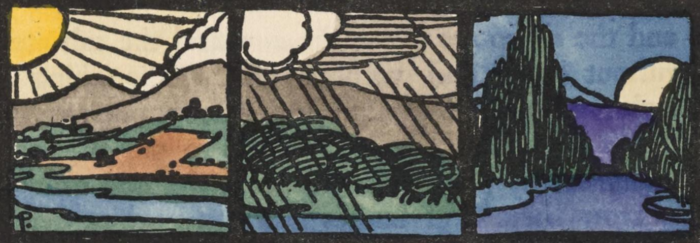
Introduction
The nineteenth century was a bustling time of change and development, where different views of the world, religion and minority groups began to formulate. Major concepts such as religion and colonization, key to the formation of the world throughout history, began to make a resurgence thematically in literature. An example that strongly displays the developing views of during this time can be seen in a poem titled The Hill of Heart’s Desire. The poem is the first the reader encounters from the Yellow Nineties magazine titled The Green Sheaf published, edited, and illustrated by Pamela Colman Smith.
In the poem The Hill of Heart’s Desire, there is a heavy undertone of both Christianity and colonization with the specific language that is utilized. The usage of these themes in the poem is done intentionally by Smith, as the Christian religion and colonization are themes that related to her personal life and upbringing. Therefore, through featuring these themes predominantly throughout The Hill of Heart’s Desire and The Green Sheaf magazine as a whole, Smith is communicating to the reader the themes that are the most important to her by their impact on her life. Examination on the themes during the time of writing the poem will be performed in order to further understand Smith’s stance on the themes and why they hold such a great significance to her as a publisher.
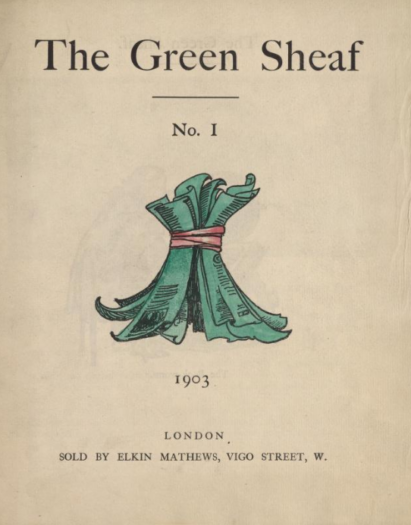
The Hill of Heart’s Desire Close Reading
Upon first reading of the text, the reader may not be aware right away of the true themes that are veiled in the presentation of text being a land appreciation poem.
However, further analyzing the diction that the poem utilizes, it reveals the true themes of the text. The first line of the poem, “After Christmas, with the help of Christ” instantly makes displays the angle the poem is taking through its mention of Christmas being the birth of Christ himself (The Hill of Heart’s Desire). With Christ’s assistance the narrator can reach this sacred land. This frames the land in a way that makes it sound that through Christ’s aid, only then can the narrator arrive at this land.
The land is described with immense beauty harboring “beautiful valleys with good growth in them, and hay” (The Hill of Heart’s Desire). With these lines from the poem both key themes are evident. The land is depicted with such beauty and can be accessed through Christ’s aid making it appear that this may be heaven itself being reachable through God’s assistance.
The mention of the land having good growth with hay showcases that the land is fertile for both livestock and agriculture, a settler’s dream.
Notable livestock mentioned being in the land are lamb and sheep, being animals that hold great symbolism in the Christian religion as being stand ins for God’s followers and children.
Further, the text explicitly states the presence of “priests and friars reading their book” (The Hill of Heart’s Desire). The book the priest and friars reading likely being the bible. This further reinforces that there are deeply woven religious themes within this poem.
Even though Smith did not write this poem herself with the poem being sourced from an unnamed peasant writer, she still deemed it significant enough to feature in her own magazine, let alone, the first poem the reader encounters.

Christianity’s Impact on The World Under England’s Control
During the nineteenth century, England was a very much a predominately Christian nation and many of the citizens had been converting from being Angelo-Saxon to Christianity throughout the ages. In a book written by Henry Mayr-Hearting, titled “The coming of Christianity to Anglo-Saxon England”, he quotes upon how the nineteenth century was the “first century of Christianity in England” (Mayr-Hearting 5). Up until this point as well, with the British colonizing more and more lands, they would also assimilate the conquered lands into following the Christian religion. The impact of the British spreading and enforcing the religion of Christianity upon other minority groups had led to Christianity becoming a more widespread force across the world. Colonized lands such as North America with the indigenous people and in the West Indies where Jamaica was located, were all forced to bend their knee beneath the British assimilation. Along with that, the British colonizers from England themselves were all still practicing their religion whilst continuing to colonize the new frontiers.
In an article written by Dr. Rowan Strong, titled “Globalizing British Christianity in the Nineteenth Century: The Imperial Anglican Emigrant Chaplaincy 1846–c. 1910” he discusses this exact phenomenon. In his article, Dr. Strong analyzes the significance in which British Christianity became widespread across the globe through the British conquest via colonization. He describes the British outward encroachment as an “international network enabling the expansion of British Christianity and the export of social capital in the form of religious connectivity throughout the settler colonies of the British Empire” (Strong). It has been evidently established that the religion of Christianity was as powerful as the British expansion, riding along the growth of the colonies and British empire. Not only were the colonies strong practitioners of the Christian religion, but those back home were as faithful as could be cementing religion’s potent influence upon the British world at large that also encompassed the colonies.
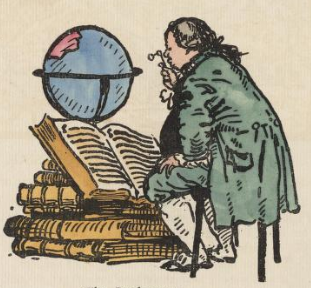
European Colonization’s Impact on Literature
As it was previously established, as the two go hand in hand with one another, Christianity as a religion grew in strength as the British colonized more land. Both had an added effect of seeping their way into literary works becoming themes that authors wrote about and featured in their works. In his scholarly journal, Ward states, “English colonial writings seem primarily to be seriously concerned with the Christian/heathen dichotomy… Christianization simply marked a signification of the transition of the savage to civilized” (Ward 50). What Ward is saying through this passage, is that the writings in relation to colonization that utilize Christianity as a way to mark an indigenous person as civilized, no longer a savage in the eyes of the colonizers. While this text speaks upon the indigenous people of the North America’s the same concept can be applied to the people of Jamaica that were also colonized. This also showcases how literary texts were circulating as religion also circulated in both England and the newly established colonies where the colonizers were met with the people who had lived in the lands before they had arrived.
Back in Europe, there was also a growing interest in scholarship that studied religion and art in literary works. Zachary Purvis’ research article on the matter examines the increase in interest during this period of history. In his article he claims that to scholars it was, “important for scholarship on the history of European ideas that integration is, and what can be gained, when religious topics move from the margins to the centre and receive consideration from different points of view (Purvis). What Purvis insinuates is that during this time of change in history, scholars found it important to study topics such as European ideas of the past and newly emerging religious topics (Christianity) as a way to gain understanding of the multiple perspectives since views were constantly changing and being formed at this point of time. Both religion and colonization played a significant role in how literature as a whole was written and studied during the nineteenth century.
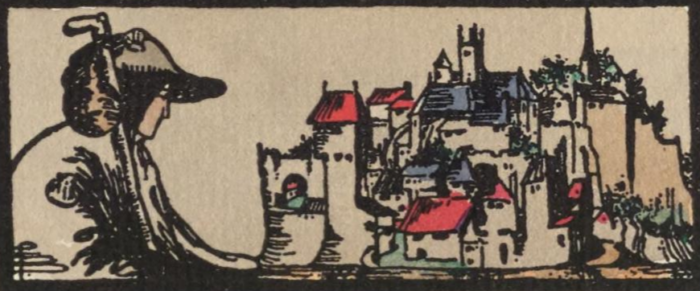
Who Was Pamela Colman Smith?
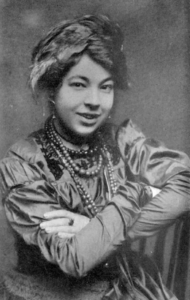
Corinne Palmela “Pixie” Colman Smith, a woman who would go on to harbor many talents, was born on February 16th, 1878.
Dennis Denisoff’s biography from the Yellow Nineties website written about Smith details her life and important contributions.
She was born in London, England to her parents John Edward Smith an American man and Corinne Colman a Jamaican woman. Born into a family of authors, artists, and mystics, Smith was profoundly influenced at a young age by the people around her into what would later become her occupation.
During her early years in England, she would have seen how religion was all around her as it was previously established that England was inhabited with mostly Christians and Catholics. This early exposure to the English religions would be significant for her future endeavors.
When she had turned ten years old, her father had received a job offer that lead to the family moving to Jamaica in 1889. At this point of time, Jamaica had very recently been established as a crowned colony about two decades earlier in 1866. This meant that when Smith and her family moved to Jamaica, she was able to witness firsthand how colonization had impacted the world around her. Along with this revelation, Smith was also exposed to the local folklore that Jamaica and the West Indies had to offer.
Later in life after moving around for school in New York, her mother had passed away and Smith moved back to London where her father passed away soon after as well. During this time back in England she had also converted to Catholicism after both her parents had passed away.
Unfortunately, Smith would join her parents and passed away in 1951 in debt and unrecognized for a long time for her work. Throughout her life, Smith witnessed how exactly the concepts of religion and colonization had shaped the world around her and became a part of her own world view was formed. This would later reflect in her works as viewed from her magazine The Green Sheaf, where the themes that were so key to her up bringing became immortalized in her publishment.
Conclusion: The Relationship Between Everything Presented
Thus far, it has been thoroughly established that each of the elements presented from the Britain’s predominant religions, colonization’s impact on literature, and Pamela Colman Smith’s personal life, each has a connection that is bound to the themes present in The Hill of Heart’s Desire featured in The Green Sheaf.
In Britain, Christianity and Catholicism were on the rise not only in England, but widespread throughout the colonies such as Jamaica. Religion and colonization molded works of literature during this time period where authors were inspired by these themes in the formation of the world around themselves. Religion was being studied upon by scholars, and colonization was shaping the far away lands that were under European rule.
With the young Pamela Colman Smith’s birth, the world around her since the day she was born was shaped by the powerful themes of religion and colonization. Smith’s upbringing and journey in life allowed her to realize the powers at play that permanently shaped the worlds she has lived in, Britain and Jamaica. The culmination of all these factors lead to Smith creating her magazine, The Green Sheaf, with the overall theme of the magazine encapsulating the same themes she had witnessed and grown up around throughout her entire life.
The first poem that she would feature in her magazine would hold the underlying subject matters that she believed were key to how her life and the world as she knew it was shaped. Smith died and was not credited for a long time for many of her contributions as an artistic figure with an immensely creative mind. Perhaps through this exhibition, one can witness Pamela Colman Smith’s “notable reputation for her work. A jack-of-all-trades” (Dennisoff).
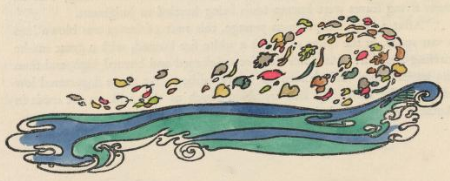
Works Cited
Churchill, Ward. “LITERATURE AND THE COLONIZATION OF THE AMERICAN INDIAN.” The Journal of Ethnic Studies, vol. 10, no. 3, 1982, pp. 37. ProQuest, http://ezproxy.lib.ryerson.ca/login?url=https://www.proquest.com/scholarly-journals/literature-colonization-american-indian/docview/1300545834/se-2.
Denisoff, Dennis. “Pamela Colman Smith (1878-1951),” Y90s Biographies. Yellow Nineties 2.0, edited by Lorraine Janzen Kooistra, Ryerson University Centre for Digital Humanities, 2019, https://1890s.ca/smith_bio/.
Mayr-Harting, Henry. Coming of Christianity to Anglo-Saxon England. Penn State Press, 2010.
Purvis, Zachary. “Introduction to the Forum: New Scholarship on Religion in Nineteenth-Century German and British Culture.” History of European Ideas, vol. 48, no. 2, 2022, pp. 160–162., https://doi.org/10.1080/01916599.2022.2030922.
Strong, Rowan. “Globalizing British Christianity in the Nineteenth Century: The Imperial Anglican Emigrant Chaplaincy 1846–c. 1910.” The Journal of Imperial and Commonwealth History, vol. 43, no. 1, 2014, pp. 1–32., https://doi.org/10.1080/03086534.2014.941158.
Images in this online exhibit are either in the public domain or being used under fair dealing for the purpose of research and are provided solely for the purposes of research, private study, or education.
